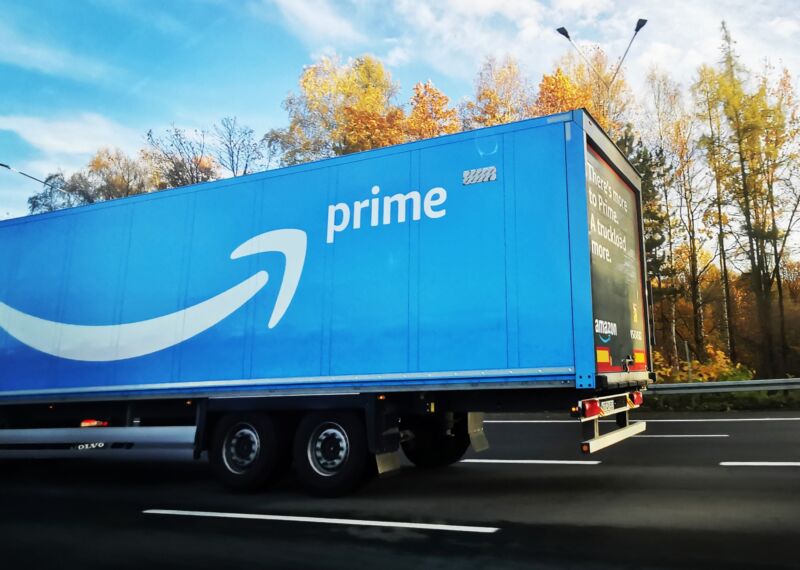
Getty Images | NurPhoto
Amazon said it will impose a 5 percent “fuel and inflation surcharge” on third-party sellers who ship through Amazon from April 28. The new US shipping fee is detailed on Amazon Seller Central and applies to the Fulfillment by Amazon (FBA) service where sellers rely on Amazon to store products in its warehouses and ship them to customers.
The 5 percent surcharge will be applied to fulfillment charges for products shipped on April 28 or later, including products purchased before that date. Amazon also said this “surcharge is subject to change”. Amazon is said to have told sellers that the “surcharge applies to all product types”.
In a “message sent to sellers on Wednesday, the company said costs had risen since the start of the COVID-19 pandemic due to increases in hourly wages, the hiring of workers and the construction of more warehouses,” it wrote. the Associated Press.
FBA products are eligible for free two-day shipping via Amazon Prime. While Amazon also offers a “Seller Fulfilled Prime” option as an alternative, it currently accepts “no new registrations”.
The fee could go up or down, Amazon suggests
“In 2022, we expected a return to normality as COVID-19 restrictions eased around the world, but fuel and inflation have presented further challenges,” Amazon said in the memo to sellers, according to NPR. “It is still unclear whether these inflationary costs will rise or fall, or how long they will last, so instead of a permanent rate change, we will apply a fuel and inflation surcharge for the first time – a mechanism commonly used in suppliers of supply chains.”
The new surcharge is putting pressure on sellers to increase the prices they charge consumers, Bloomberg wrote:
“We will definitely have to raise prices,” said Molson Hart, whose Viahart Toy Co. sells educational toys and other products on Amazon. “Some sellers can’t because customers don’t accept the new higher prices.”
Hart said he already had to take lower profit margins on larger toys that are more expensive to ship because consumers wouldn’t pay the higher prices.
The consumer price index for all items rose “8.5 percent for the 12 months ended March, the largest 12-month increase since the period ending December 1981,” the U.S. Bureau of Labor Statistics reported Tuesday.
“Correcting the market and raising prices”
While Amazon reportedly told sellers that the new surcharge is lower than the fuel surcharges charged by UPS and FedEx, Amazon has already taken a significant cut in revenue from FBA sales through various levies. A report from the Institute for Local Self-Reliance (ILSR) in December said that “Amazon is abusing its gatekeeper position to impose ever-increasing tolls on these companies. By leveraging a variety of fees, Amazon is now achieving a reduction in Our analysis shows 34 percent of revenue earned in. by independent sellers on their site, up from 30 percent in 2018 and 19 percent in 2014.”
Amazon raised FBA storage fees earlier in February. In January, Amazon increased the fees for labeling and package preparation, and for takedown and disposal. “Amazon raises its seller fees… again. This is what monopoly looks like: you conquer the market and raise prices,” ILSR co-director Stacy Mitchell wrote yesterday in response to the new fee.
While participating in FBA is optional, “Amazon’s algorithms strongly favor sellers who do so, making FBA all but necessary to drive sales on the site,” the ILSR report said. Citing data from Marketplace Pulse, the report said that “84 percent of the top 10,000 sellers on Amazon use FBA.” That number has now risen to 86 percent.
“Last year, sellers paid Amazon about $103 billion in fees, which accounted for about 22 percent of the company’s revenue,” the AP wrote.

